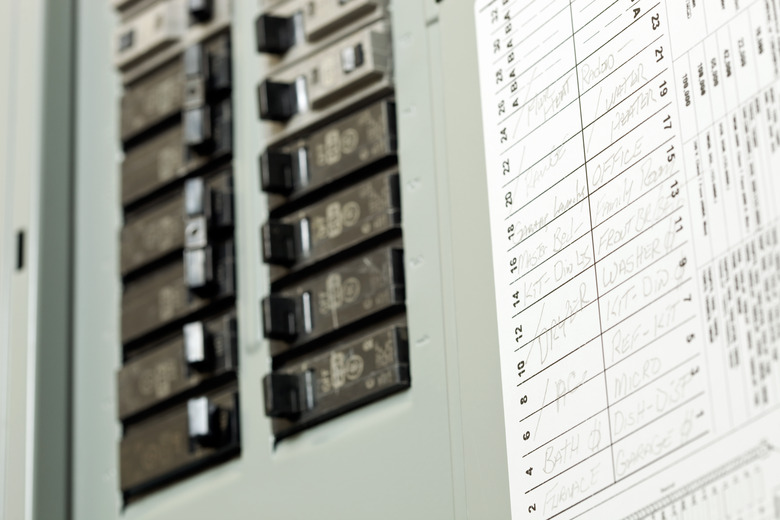How To Change A Fuse In A Breaker Box
Every home has an electric panel, which controls all the circuits in the house. In modern homes, circuit breakers protect each circuit from overheating, but in older homes, fuses provided this protection. In circuit breakers, power enters through two hot cables, each at a voltage of 120 volts, which gives a total voltage of 240 volts between them. These connect to a grid in the panel to which each circuit is also connected.
The Fuse Box
Houses built in the early part of the 20th century had 120-volt service. Power came through the fuse box, which was usually a black metal box located in the basement or in a closet. The fuse box had a knife-blade disconnect, a 30-amp main fuse, and 10- or 15-amp fuses for the branch circuits. These fuses, which screwed into a ceramic housing, each featured a carefully calibrated metal strip that would melt when the current exceeded its rating. When a fuse "blew," the power would go off, electric outlets would stop working, and the fuse would have to be replaced.
The Breaker Box
Circuit breakers have been around since 1900, but because breakers and breaker boxes are expensive and fuses work well, breakers didn't become popular until the mid-1950s. That's when the 60-amp service panel, featuring a 240-volt feed, was introduced. Breakers are reusable, which is a great advantage over fuses. Each one contains a magnetic circuit that pulls a lever to trip the breaker when the current exceeds the breaker's rating. It's a simple matter for a homeowner to reset a tripped breaker, but even though you can reset them, circuit breakers sometimes need to be replaced since they don't last forever.
Changing a Breaker Box Fuse
Besides the fact that the power went off, you can tell that a fuse has blown by looking in the small window in the front of its circular face. The metal strip, which is visible there, will be severed in half.
To replace the breaker box fuse, you need one with the same current rating. Don't be tempted to use one with a different rating because you don't have the proper one, or you could cause a fire. Unscrew the old fuse and screw in the new one. There's no danger because the part of the fuse that you can touch is made of glass, which is an electrical insulator.
Resetting and Changing a Breaker
When a breaker trips, you should be able to see the incorrect positioning to tell that it needs to be reset. Depending on the type of breaker, it might move to either a neutral position in the center or completely to the off position when it gets tripped. Some breakers have different indicators, such as a window that shows red when the breaker is tripped or a light to indicate a tripped breaker. A tripped breaker might also feel springy instead of firm in its position when you check it. When you find the affected breaker, switch it completely to the off position and then turn it back to the on position to reset it.
If you need to replace a circuit breaker inside the breaker box, you should hire an electrician because it involves removing the panel cover. The inside of the panel is always electrically energized, even when the main breaker is off, and touching any of the wire connections can give you a serious shock. The electrician will pull off the old breaker, disconnect the wire, and then connect the wire to a new breaker and snap it into the slot occupied by the old one.
